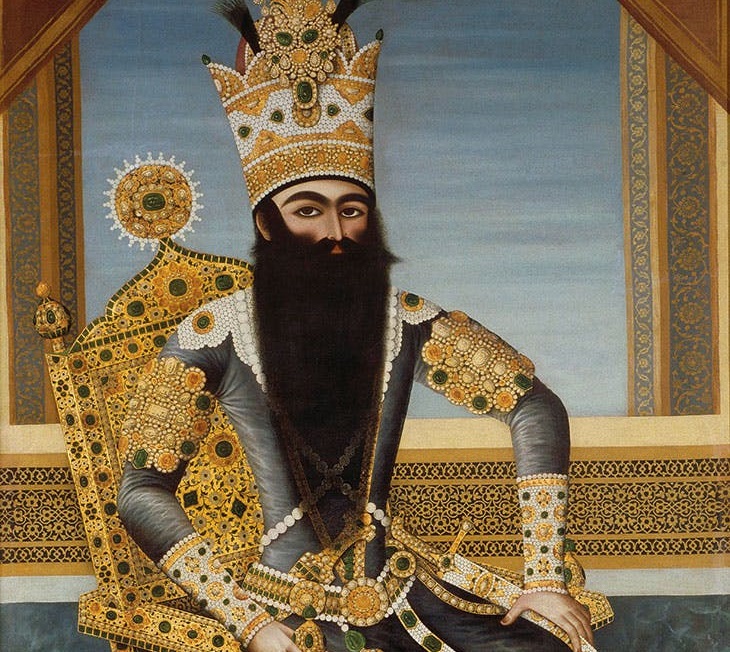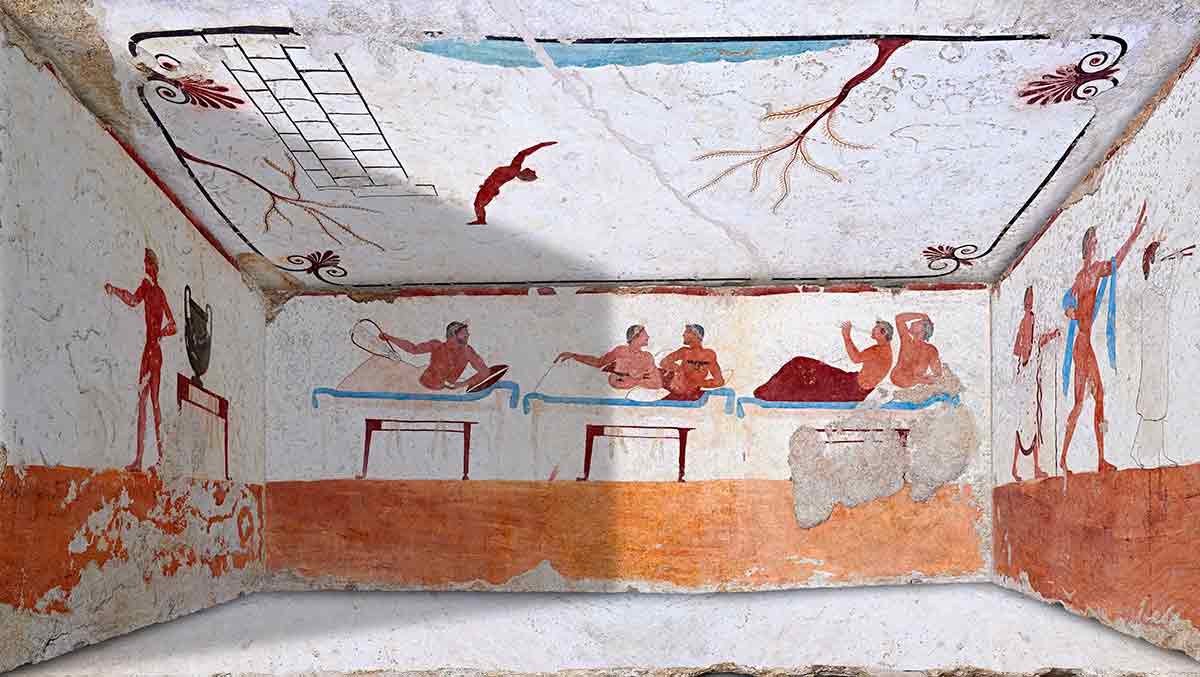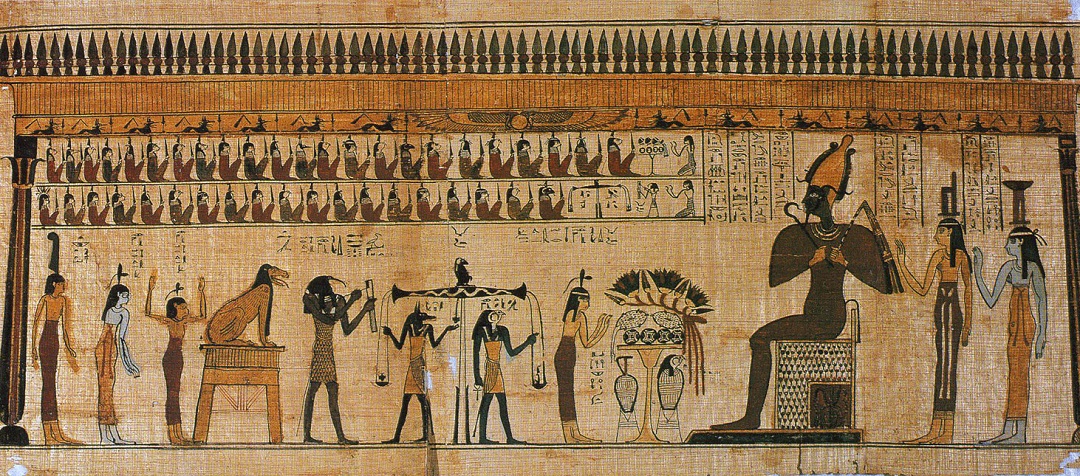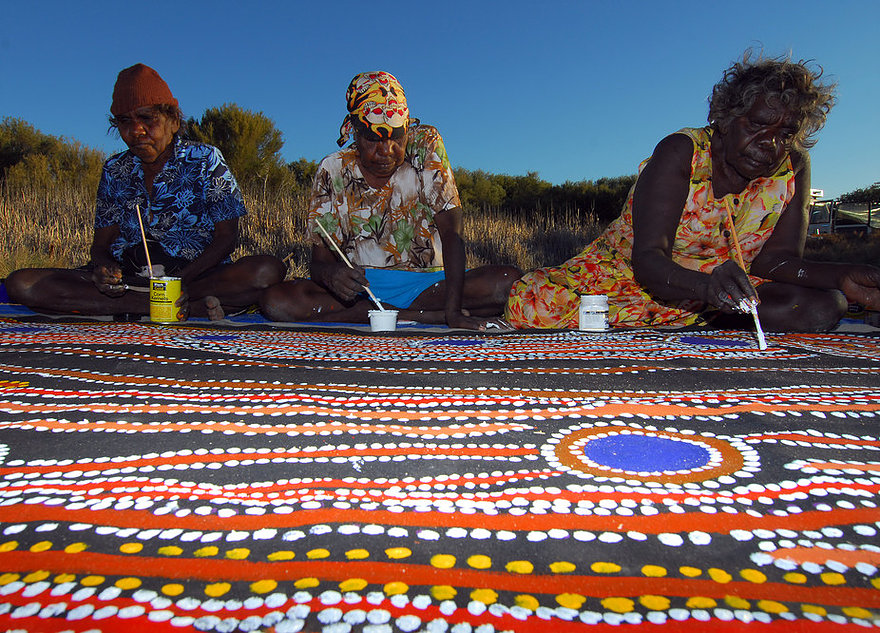The Rise of Roman Art
The Romans ruled over much of Europe, Asia and Africa for more than 1000 years, with their period of invasion beginning in 753BC. As the Roman army made its way through Europe, conquering countries as they went, they were also heavily influenced by the different artistic styles they came across. It is common to see elements of Greek, Egyptian, German and Celtic art in their paintings, although there is also a little Roman ‘something’ that distinguishes their work from the other cultures. Perhaps it is their insistence on realism throughout their murals, depicting everything as it should be in order to preserve the memory.
Very often, particularly with Greek art, the Romans would think nothing of copying statues and paintings, editing them slightly to suit their own wicked sense of humour. We know little about individual artists of the time, since there is no documentary evidence and they would rarely sign their name on a piece, so we have to consider them as a group.
Adorning the Walls
The first Roman paintings were created directly onto the interior walls of the homes of the wealthiest members of society. These ‘frescos’ were made to impress visitors, so they were very bold and busy. The rich pigments were usually in natural earthy colours of reds, yellows and browns, with the addition of blues and black for emphasis, and applied to wet plaster to make for a more durable and long-lasting mural. Most of these were destroyed over time, since paint does tend to fade with exposure to light and air, but one site in Pompeii was almost perfectly preserved after being buried in a volcanic eruption.
Mount Vesuvius threw a thick cloud of ash over the city of Pompeii in 79CE, acting as a way of preserving the vivid colours and potentially fragile nature of paint. When rediscovered, some thousands of years later, these exciting finds were categorised by nineteenth-century German scholar, August Mau.
Incrustation Style (First Pompeian Style)
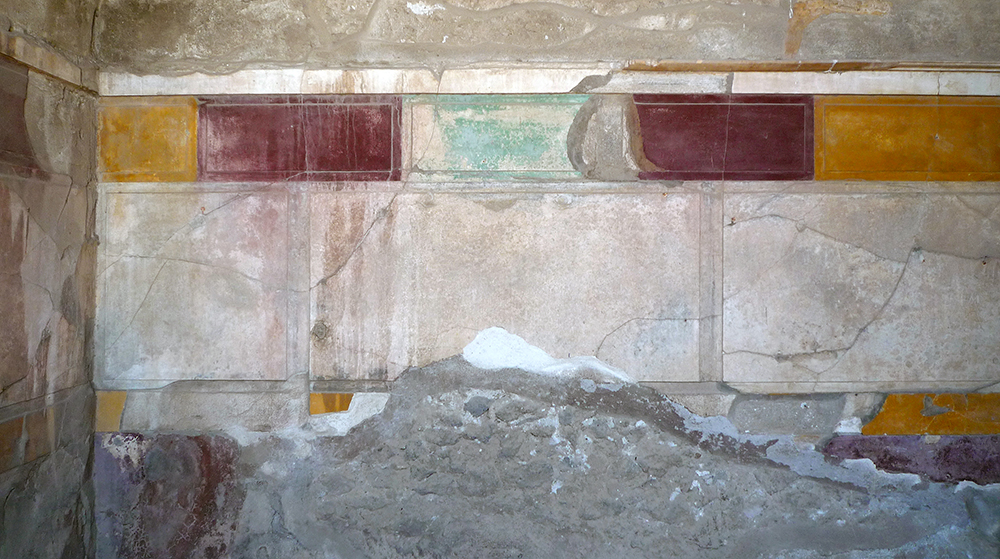
Thought to be dated around the Hellenistic period, these walls were characterised with bright colours, patchwork themes and marble-style decoration. In temples and other religious buildings, real imported marble was used, but the fake marble style used in homes was extremely convincing. Stucco mouldings made for a three-dimensional appearance, breaking up the painted rectangles.
Some of these paintings can still be visited in their original beauty in Pompeii.
Architectural Style (Second Pompeian Style)
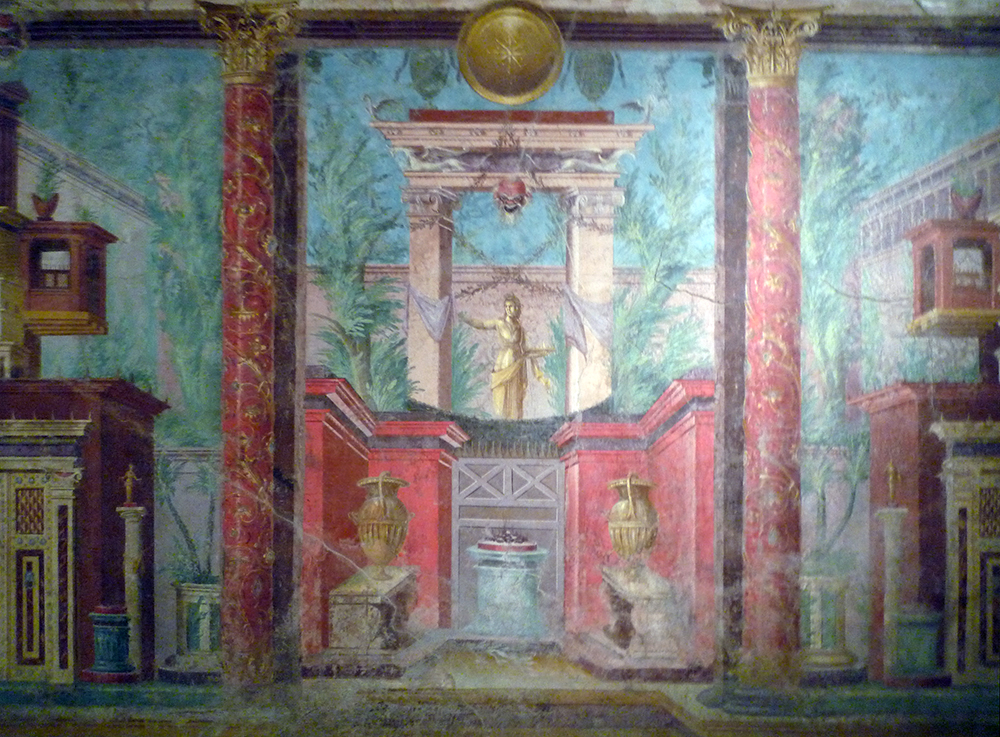
The second era of wall painting continued to make use of marble-effect colours, but there was an element of illusion involved in the design. Architectural elements became fashionable, using perspective to create distance and multiple focus points. Columns, buildings, fountains and other exterior elements adorned the walls, in a fashion that lasted until the end of the first century BCE.
A reconstruction of P. Fannius Synistor’s bedroom is available to view in the Metropolitan Museum of Art. It is one of the most famous examples of this style of art.
Ornate Style (Third Pompeian Style)
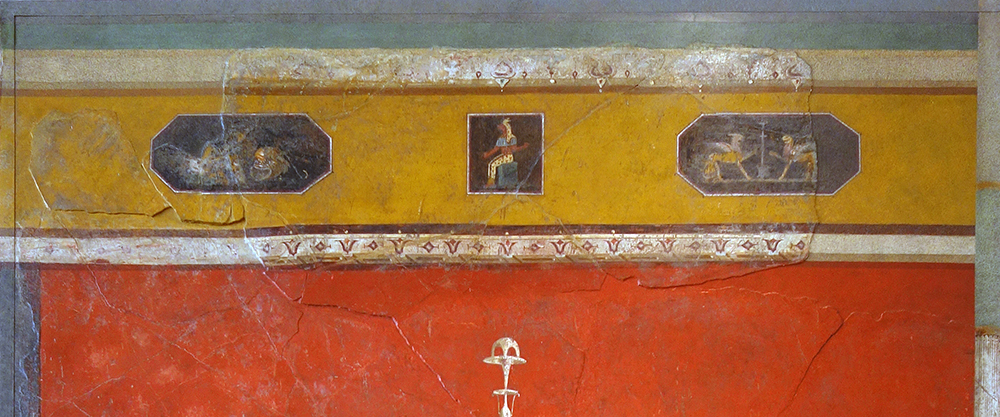
Paintings changed dramatically between the early first century CE and 50 CE. The big bold fresco designs were replaced with block colour, broken up by delicate ornate detail. This decoration was still based upon architectural design, but it was more imaginative and fantastical, with building structures that could not possibly exist in real life. Occasionally, the centre of the wall would feature small scenes with images including subjects such as animals, temples and fields.
It was during this period that the Romans started to be influenced by Egyptian themes, which can be seen through representations of the Nile and the use of traditional Egyptian imagery.
Intricate Style (Fourth Pompeian Style)
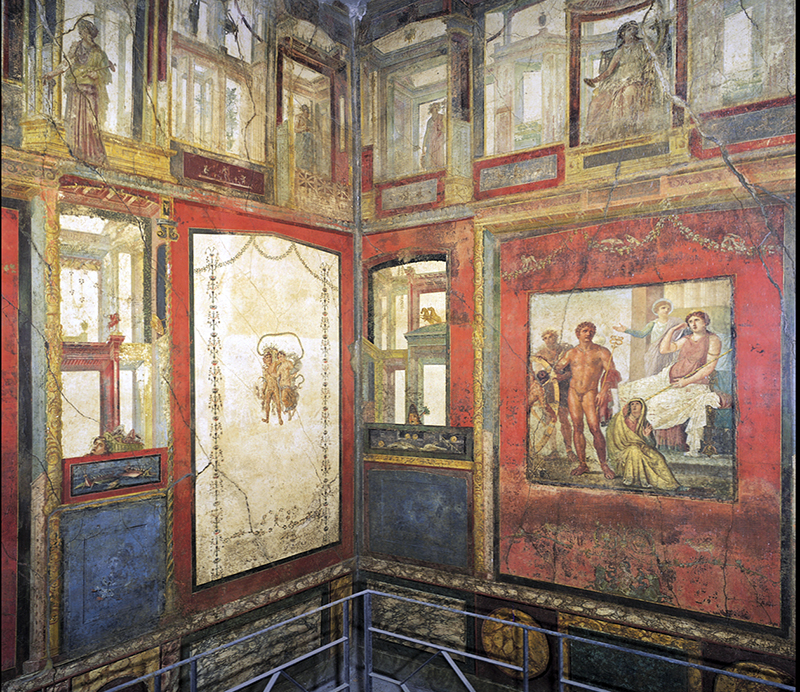
This fourth style is an exciting combination of everything that came before it, with marble-styled blocks, architectural imagery and large blocks of colour with delicate detail. Up until the city’s destruction in 79CE, this period also saw the introduction of large central panel pictures with an incredibly diverse range of themes.
Some of the best examples of this era of wall painting can be seen at the House of Vettii in Pompeii. Famulus is arguably the most celebrated artist of the time, having painted Nero’s Golden Palace. Wall painting continued until well after the end of the fourth era, but it was simply a combination of what had come before, depending on the preferences of the inhabitant. It is worth noting, as well, that many of the murals of this time had a pagan theme to them. During the late Roman era, religious frescos had a stronger Christian theme about them, coinciding with the granting of tolerance by Constantine in the year 313.
https://www.youtube.com/watch?v=Qgty8VQEdIU
Commemorative Art
When a significant person died, it was customary to create art in their likeness, as a way to remember them. However, even ordinary citizens now had access to art and so statues of people’s heads became so popular that artists would mass-produce the top of the body, carving individual heads on once an order came in. Portraits were also painted, but the deceased would often have wished for details to be exaggerated, such as the furrows on their forehead or the size of their nose, since they believed these features portrayed them as the perfect Republic citizen. This led to a lot of paintings and sculptures looking almost caricature-like in style.
Some of the most interesting paintings, were buried in underground caves called catacombs. These were areas for Christians to bury their loved ones, without fear of being persecuted by the Roman Empire, since Christianity was illegal for most of the Roman period. These murals were very different to the pagan ones, hurriedly sketched in order to convey an important Christian belief, rather than serving any sort of decorative purpose. Some pagan elements do run through these paintings, however, with depictions of Jesus as a shepherd or in a similar way to classical deities, and the four evangelists were often shown as winged creatures.
Illumination Painting
Later in the Roman era, artists began to paint manuscripts, a craft known as illumination. These manuscripts were parchment, made from animal skin, so that they were durable and tough. There are many still on show today.
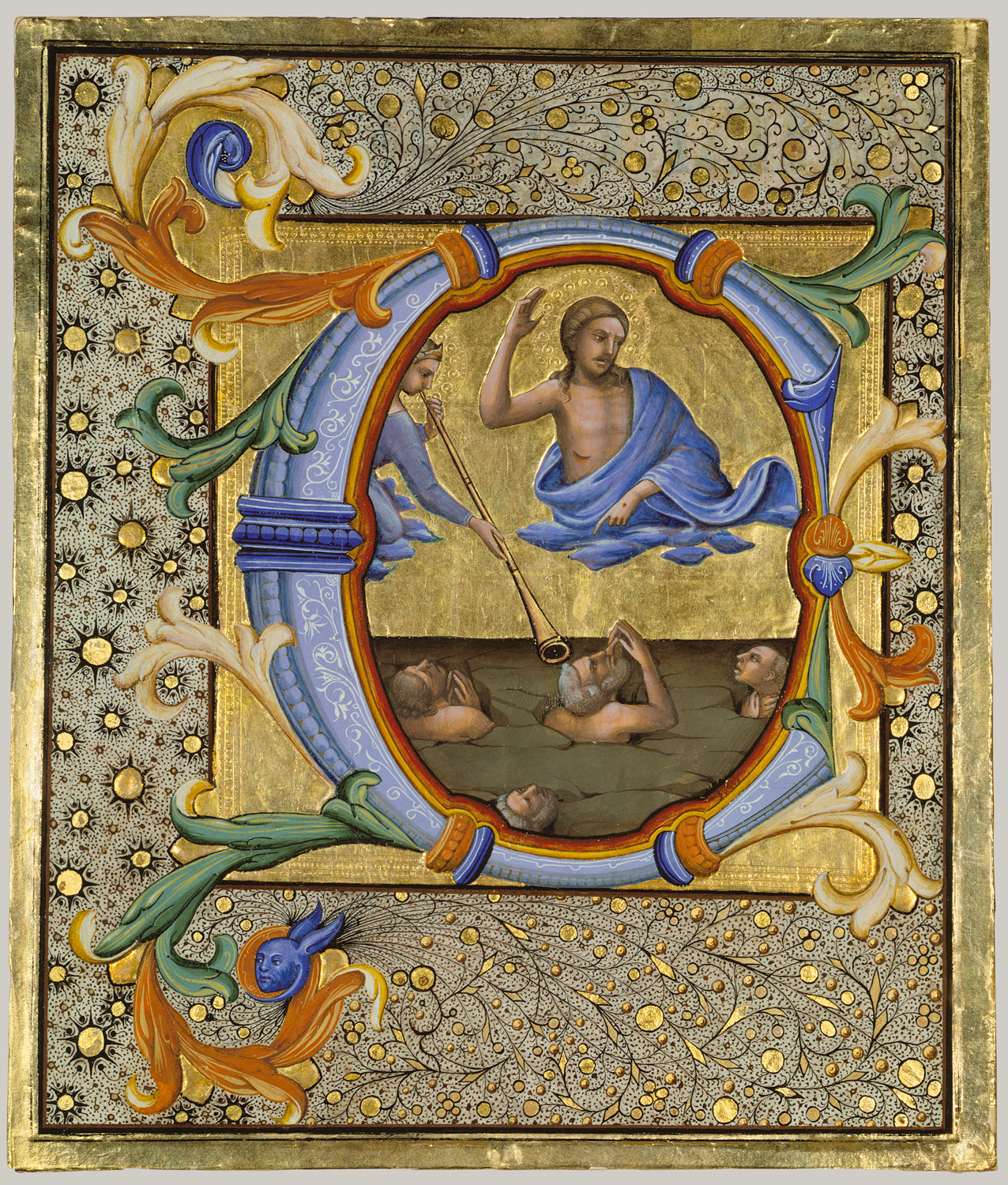
This craft grew around the Renaissance time, with illuminations being created to cover choir books in particular. Lorenzo Monaco was one of the leading artists of the time and produced one of the most famous choir books series for the Camaldolese monastery of Santa Maria degli Angeli.
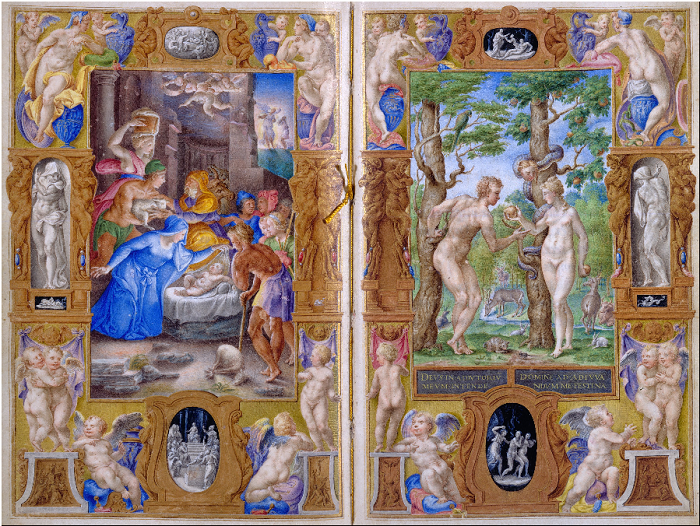
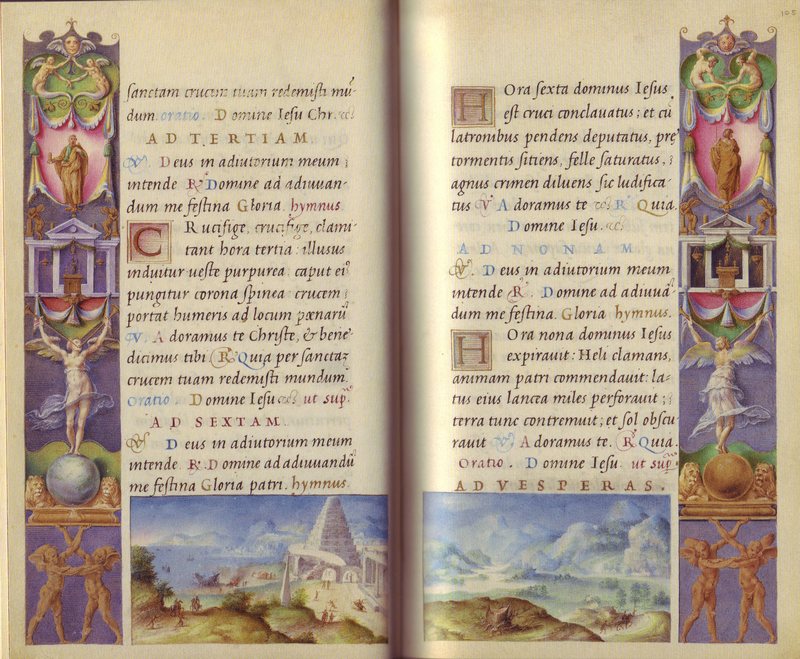
As the Renaissance blossomed, libraries of books, filled with new knowledge, would be adorned with illumination, commissioned by booksellers. It was this period of time that led to the appreciation of artists including Cristoforo Cortese, Girolamo da Cremona, Michelino da Besozzo and Giulio Clovio, who was given the prominent role of transferring Michelangelo’s sculptures into illumination.
Where to See Roman Art Today
There are some historical sites in England were Roman murals can still be seen. The Roman Wall of St Albans has some original Christian pieces, as does Lullingstone castle. If you’d prefer to visit a traditional museum, you could try Segedunum Roman Fort, Baths and Museum, Chesters Fort and Museum or Arbeia Roman Fort and Museum. While you are there, you can immerse yourself in a little bit of Roman history while enjoying the ancient works.
Sources:
- https://www.ducksters.com/history/art/ancient_roman_art.php
- https://www.khanacademy.org/humanities/ancient-art-civilizations/roman/beginners-guide-rome/a/introduction-to-ancient-roman-art
- https://smarthistory.org/roman-wall-painting-styles/
- https://www.metmuseum.org/toah/works-of-art/1975.1.2485/
- http://www.essential-humanities.net/western-art/painting/roman/
- https://www.ancient.eu/Roman_Art/
- https://www.britainsfinest.co.uk/museums/search/class/roman-museum
- http://www.croatia.org/crown/articles/10353/1/giulio-clovio-croata-149882111578-the-greatest-miniaturist-of-the-renaissance.html


